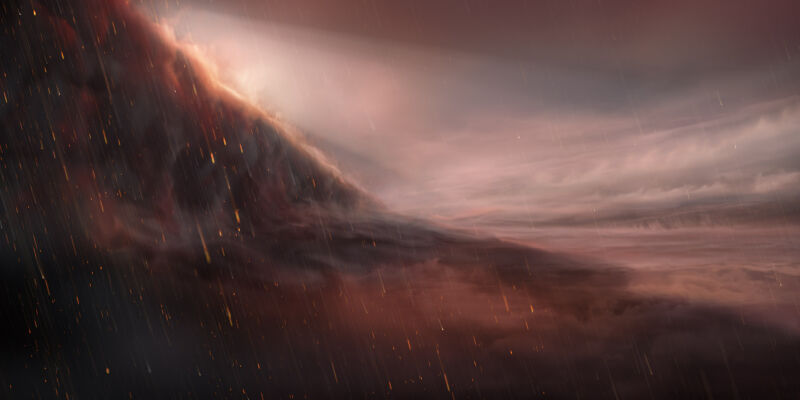Hot gas-giant planet appears to have iron rain

Enlarge / Artist's impression of what the iron rain might look like. (credit: ESO/M. Kornmesser)
The first exoplanets discovered tended to be gas giants orbiting close to their stars. That's because these are easy to find. Their large size and proximity to the star increase the signal caused by either their gravitational influence on the star or through the amount of starlight obscured by the planet. Over time, however, our ability to image exoplanets has given us a more complete picture of the full catalog of planets outside our Solar System.
As interest in exoplanets has shifted to their atmospheres, however, attention has shifted back to hot gas giants for similar reasons: their atmospheres are large, and therefore the signals they produce are correspondingly large. Now, researchers are reporting details of the atmosphere of a very hot exoplanet with a feature that sounds like something out of science fiction: a rain of liquid iron falling through the night atmosphere.
Imaging an atmosphereHow do you figure out what's going on in an atmosphere of a planet that's light years from Earth? It requires a planet that orbits in a way that it passes between Earth and its host star. During these transits, most of the light from the star still comes directly to Earth. But a tiny fraction passes through the planet's atmosphere on its way, interacting with the atoms and molecules that reside there. These can leave a signature on the light, with different atoms and molecules absorbing at specific wavelengths.
Read 13 remaining paragraphs | Comments